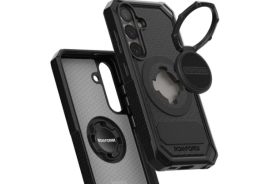Huawei P10's issue regarding slower memory and screens are blamed to the component supplier of the device. The company was rained with complaints from some Chinese unsatisfied customers.
According to a report, Chinese owners of Huawei P10 said that the unit they bought are getting slower in flash memory performance and some said that blotch are starting to appear on the screen. For P10, Huawei used the eMMC 5.1 spec rather than the new UFS 2.0/2.1. Those devices that used eMMC 5.1 chips scored lower in storage benchmarks and in another test, Huawei P10 that has this chip just accomplished half the tasks performed by other devices run by faster chips, reported by ZDNet.
To answer this issue, Consumer Business Group (CBG) CEO of Huawei, Richard Yu, released a statement through the social network Weibo. He also answered the grievances of Huawei P10 owners. According to Yu, the problem with the smudgy screen was caused by the absence of an oleophobic coating on the display. Regarding the problem with memory speed, Yu explained that it is because of a serious supply shortage of UFS 2.0 and 2.1 chips, which are really known to be faster than the eMMC 5.1. The company left without a choice but to settle on a slower chip. In fairness to Huawei, the company never included a UFS chip on the spec sheet of P10. However, customers just assumed that the specs of Huawei P10 will be just the as close, if not the same, with what Mate 9 had. Mate 9 was in the same Kirin 960 platform and with faster UFS 2.1 storage, reported Android Central.
Yu also added that the slower memory on some P10s would not affect the real world performance. According to him, through Huawei's hardware and software optimizations, a good real-life performance and experience can be achieved. Explaining about, why the P10 does not have an oleophobic coating, Yu stated that it is due to the Gorilla Glass 5 combined with static electricity. Oleophobic coating, according to The Verge, is important to prevent the build-up of smudges and grease on the screen. However, in the case of P10's Gorilla Glass 5 display, it is not compatible with oleophobic coating technique. This will then results in interference on the touch sensor.
Huawei will release new batches of P10, probably with a new coating technique. Chinese Huawei customers who encountered a problem regarding slower memory and the smudgy screen can go to Huawei local stores in their areas to have their device treated. However, it is unclear where the customers who bought P10 outside Huawei's home market would go
© Copyright 2025 Mobile & Apps, All rights reserved. Do not reproduce without permission.














